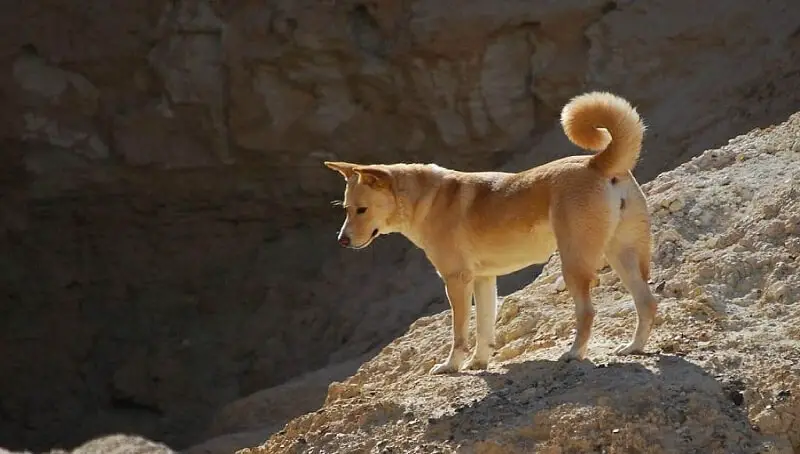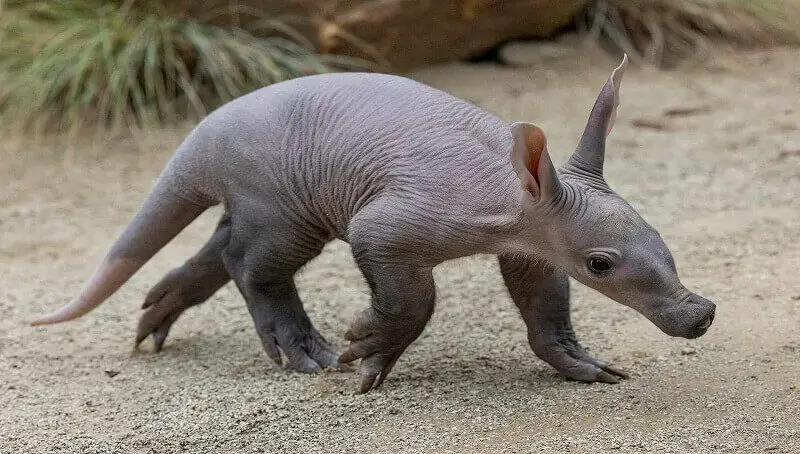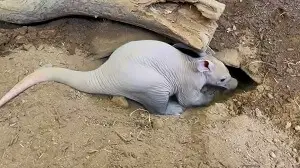
Cat and kitten vaccinations
November 1, 2022
Canaan Dog – Breed Information
November 1, 2022
- Area: Africa
- Habitat: Savannahs, pastures
- Food: Ants and termites
- Size: 1 – 1.3 m
- Weight: 40 – 65 kg
- Speed: 40km/h (26mph)
- Colors: grey-cream
- Reproduction: 1 offspring
- Predators: Lion, hyena, leopard
- Live: Solitary
- Average age: 15 to 20 years
- Special features: It has a tongue 30 cm long
The Aardvark (Orycteropus afer) is a medium-sized nocturnal animal native to Africa. It belongs to Orycteropus, the Tubulidentata family. He roams through the lowlands of the continent, preferring to bypass the stone areas.
It lives in sub-Saharan areas such as savannahs, pastures, or shrublands where it can find its favorite food.
Aardvark means “earth pig”. It is called this because of its habits. The Aardvark is not related to the pig. It has more in common with the elephant. Aardvark in Greek means “to dig with the foot”.
Aardvarks, as they are known, can be found in foreign and specialized literature under the following names: Anthill, Antbear, earth hog, or Ant eater.
What does the Aardvark eat?
The Aardvark or anteater is a solitary nocturnal creature that feeds almost exclusively on ants and termites. The only fruit an Aardvark eats is the cucumber. It can be said that the Aardvark and cucumber have a symbiotic relationship.
It eats the fruit and makes its needs near the burrow, where another cucumber grows due to the fertile soil. The time the seeds of the cucumber spend in the belly helps them get fertilized and they also have humidity.
It goes out in the morning and evening in search of food and walks considerable distances from 10 to 30 km. While looking for food, it keeps its nose as close to the ground as possible and its ears point forward. When they detect a colony of ants or termites, they dig with their front legs, keeping their ears upright to listen for approaching predators. Once it reaches its prey it can consume up to 50.000 ants in one night.
Interesting features of Aardvark
It is similar to the pig because of the long nose that it uses to look for food and the sturdy, visibly arched body. The body is covered with rare and rough hairs. The limbs are of medium length, with the back legs longer. The front legs have four fingers and the thumb (the pollex) missing.
You might also like my articles with interesting facts about lemmings, frill-necked lizards, or capybaras.
An anteater usually weighs between 60 and 80 kg. The length is between 105 and 130 cm but can reach lengths of over 2m. Then the tail exceeds 70cm. It has a gray color, but it often changes to reddish brown because of the soil.
The fur is rare and thin, the main protection of the animal being the skin that is hard and thick. On the head and tail, the hair is very short, on the body it is medium, and on the legs, it is the longest. The hair around the nostrils helps filter the smell from dust or dirt particles. The tail is thick at the base and gradually thins toward the top.
 The Aardvark has several unique features. The elongated head is supported by a short, thick neck at the end of which the nostrils are found. The most obvious feature is teething. Instead of having a mouth like most animals, they have teeth only on the back of their mouth and are unique, looking like columns.
The Aardvark has several unique features. The elongated head is supported by a short, thick neck at the end of which the nostrils are found. The most obvious feature is teething. Instead of having a mouth like most animals, they have teeth only on the back of their mouth and are unique, looking like columns.
The number of these columns depends on the size of the tooth and the age of the animal. Their teeth don’t have enamel and they are constantly growing.
Another unique feature is the nose. It has hair on the sides and moves with the help of the mimic muscles. Its nose is made of more bones than any other mammal. The mouth is small and tubular. The tongue is long and thin, about 30 cm in length. Their ears are very effective. The eyes are small enough for such a big head.
Chewing is not very important for the Aardvark. The digestive system has strong secretions. Both males and females have a gland that develops a very strong odor from feces. Salivary glands are highly developed, which is good because the tongue is kept sticky.
They hide in dark underground burrows to avoid hot hours and hot weather. They also avoid rocky terrain because it’s harder to make its burrow, being hard to dig.
Its natural predators are lions, leopards, hyenas, and pythons. Some locals hunt them for meat. The aardvark runs in zigzag when it feels threatened, and if it has to fight, it will hit with its claws. If they feel stressed or have to dig from a stall they can do it very quickly.
The aardvark is a relatively quiet animal, a good swimmer, and a good digger. It can dig 1m in 5 minutes. The burrow can have several entrances and lengths of 13 meters. The burrow can be large enough that a human can enter. The burrow is changed periodically. As in Africa, the shadow is looked for, and other animals come to occupy the free burrows, like pythons, lizards, hyenas, mongoose, or owls. Without these hiding places, many animals would not survive.
Reproduction in Aardvark
Sexual maturity is achieved in both males and females at the age of 2, but Aardvarks pair only during mating season. After a seven-month gestation, the offspring weighs almost 2 kg. It is born in May-July. After three weeks, the pup keeps its ears straight.
After 5-6 weeks, its hair starts to grow on its body. At the age of two weeks, it can accompany its mother on the hunt and at 9 weeks it eats termites. By the age of 3 months, the aardvark is weaned.
At the age of 6 months, it can dig its own burrows, but most of the time it stays with its mother until the next mating season.
Facts
The Aardvark is called a pig because of its pig-like nose.
It has several unique characteristics: Dentition, and the shape of the head.
It can dig 1m in 5 minutes.
